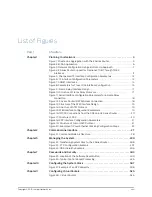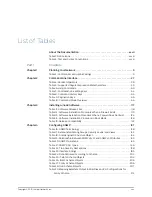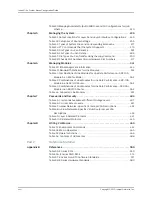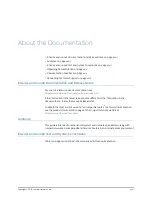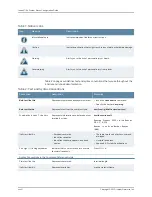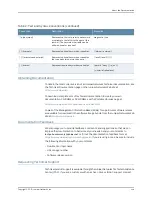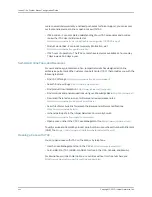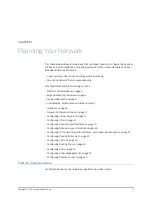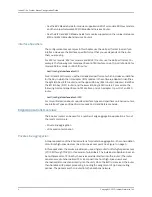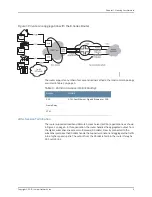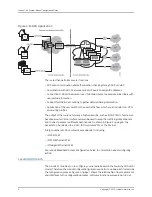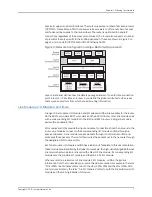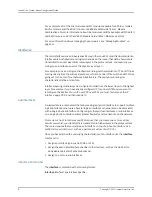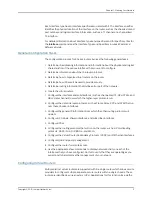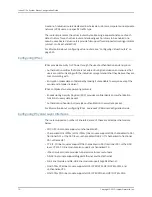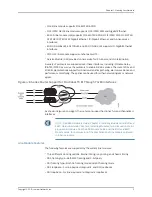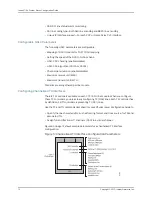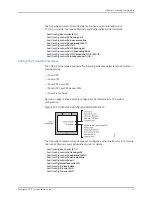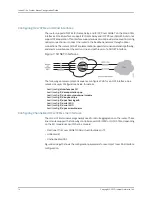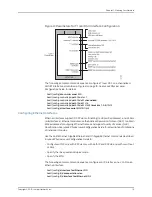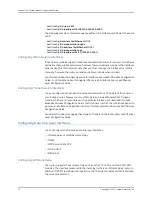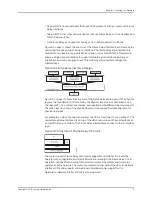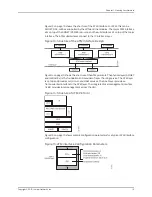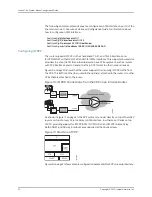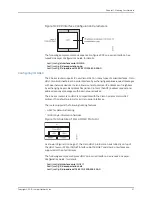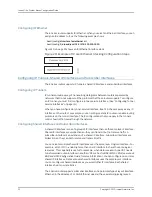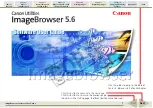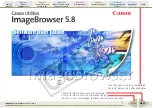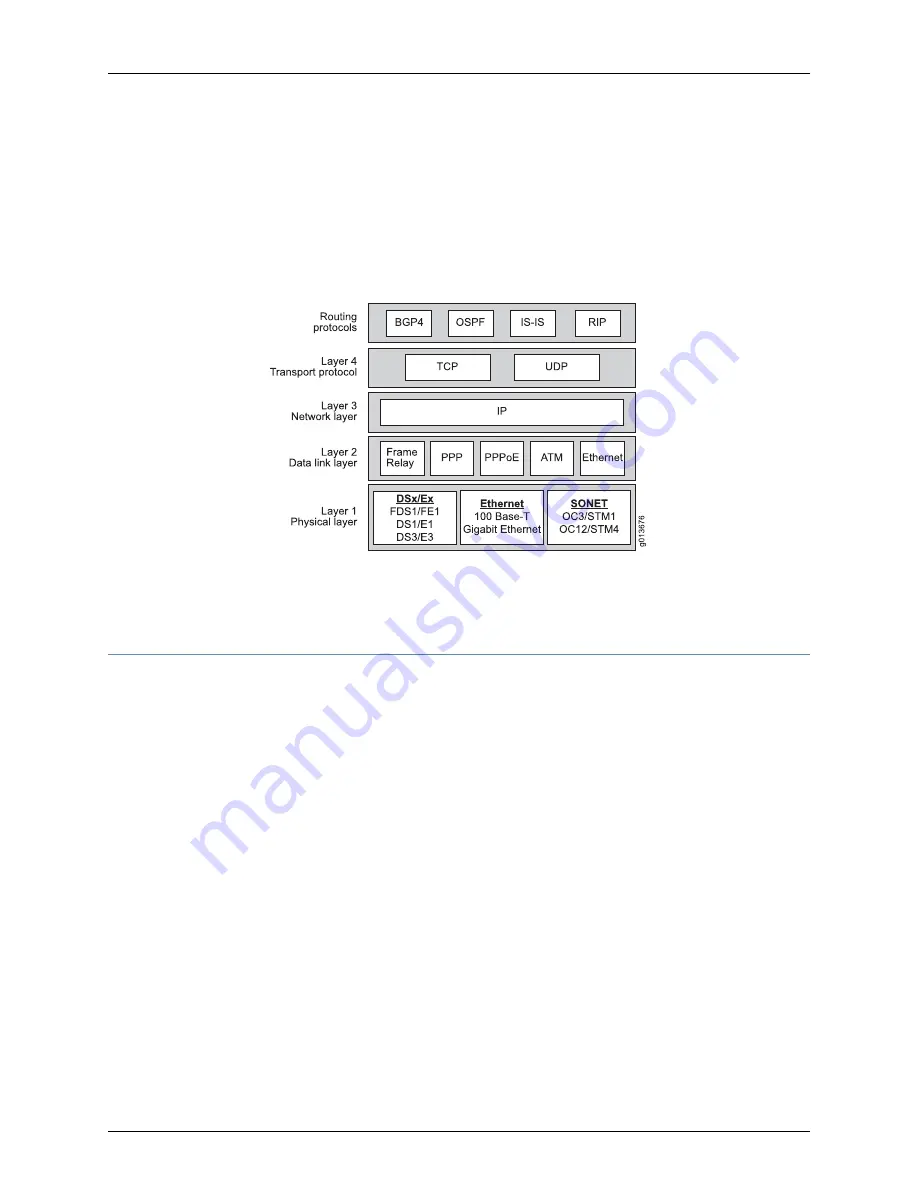
physical (copper or optical) interfaces. The router supports a number of access protocols
(PPP/POS, Frame Relay, ATM) that allow service providers to offer a number of access
methods and line speeds to their subscribers. The router is optimized to handle IP
connections regardless of the access protocol used. The router also supports a number
of protocols that are specific to the B-RAS application. These are shown in Figure 3 on
page 7, and include IP/PPP/ATM and IP/PPP/Ethernet/ATM.
Figure 3: Network Configuration Using a Bottom-Up Approach
Layer 2 (data link) defines how the data is packaged and sent to an IP data connection
point in layer 3 (IP interfaces). In layer 3, you define the global attributes for IP services
that serve as a platform from which you add routing information.
Line Modules, I/O Modules, and IOAs
A range of line modules, I/O modules, and I/O adapters (IOAs) are available for the router.
On the ERX14xx models, ERX7xx models, and the ERX310 router, most line modules pair
with a corresponding I/O module. On the E120 and E320 routers, a single line module
pairs with all available IOAs.
I/O modules and IOAs provide the input and output connections from the network to the
router. Line modules connect to their corresponding I/O modules or IOAs through a
passive midplane. A line module receives packets through its I/O module or IOA and
processes those packets. The router then routes the packets out to the network through
the designated I/O module or IOA.
Each line module, I/O module, and IOA has a label on its faceplate. In this documentation,
these modules are identified by that label. For example, the high-density Gigabit Ethernet
line module has two ports, and is called the GE-HDE line module. Its corresponding I/O
modules are the GE-HDE I/O module and the GE-2 SFP I/O module.
When we refer to a related set of line modules, I/O modules, or IOAs, the generic
information from the module labels is used in this documentation. For example, the term
“ OCx/STMx line modules” refers to both the OCx/STMx ATM and the OCx/STMx POS
line modules. Similarly, the term “ GE I/O modules” refers to both the GE Multimode I/O
module and the GE Single Mode I/O module.
7
Copyright © 2010, Juniper Networks, Inc.
Chapter 1: Planning Your Network
Summary of Contents for JUNOSE 11.3
Page 6: ...Copyright 2010 Juniper Networks Inc vi...
Page 8: ...Copyright 2010 Juniper Networks Inc viii JunosE 11 3 x System Basics Configuration Guide...
Page 24: ...Copyright 2010 Juniper Networks Inc xxiv JunosE 11 3 x System Basics Configuration Guide...
Page 32: ...Copyright 2010 Juniper Networks Inc 2 JunosE 11 3 x System Basics Configuration Guide...
Page 146: ...Copyright 2010 Juniper Networks Inc 116 JunosE 11 3 x System Basics Configuration Guide...
Page 166: ...Copyright 2010 Juniper Networks Inc 136 JunosE 11 3 x System Basics Configuration Guide...
Page 432: ...Copyright 2010 Juniper Networks Inc 402 JunosE 11 3 x System Basics Configuration Guide...
Page 488: ...Copyright 2010 Juniper Networks Inc 458 JunosE 11 3 x System Basics Configuration Guide...
Page 524: ...Copyright 2010 Juniper Networks Inc 494 JunosE 11 3 x System Basics Configuration Guide...
Page 554: ...Copyright 2010 Juniper Networks Inc 524 JunosE 11 3 x System Basics Configuration Guide...
Page 566: ...Copyright 2010 Juniper Networks Inc 536 JunosE 11 3 x System Basics Configuration Guide...
Page 588: ...Copyright 2010 Juniper Networks Inc 558 JunosE 11 3 x System Basics Configuration Guide...
Page 613: ...PART 3 Index Index on page 585 583 Copyright 2010 Juniper Networks Inc...
Page 614: ...Copyright 2010 Juniper Networks Inc 584 JunosE 11 3 x System Basics Configuration Guide...
Page 632: ...Copyright 2010 Juniper Networks Inc 602 JunosE 11 3 x System Basics Configuration Guide...

